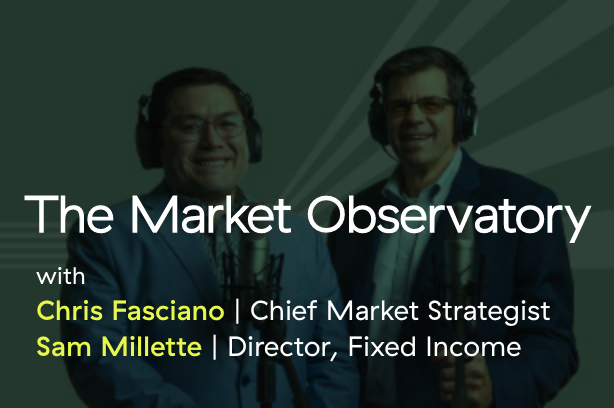As Turkey’s crisis rumbles on, investors are on the watch for signs of contagion. Emerging markets in general are getting hit, so contagion remains a possibility. Still, there are reasons to believe the crisis will burn out in Turkey itself.
August 14, 2018
As Turkey’s crisis rumbles on, investors are on the watch for signs of contagion. Emerging markets in general are getting hit, so contagion remains a possibility. Still, there are reasons to believe the crisis will burn out in Turkey itself.
August 3, 2018
The employment report, probably the single most important economic report there is, came out this morning, and the headline number on job creation was not good at all. In June, the economy added 213,000 jobs, and the expectations for July included another 193,000. Instead, we got only 157,000. You might see a fair amount of angst in the coverage today.
August 1, 2018
As we begin August, let’s take a look back at the markets in July, plus what to expect in the month ahead.
July 31, 2018
With the sharp drop in Facebook stock on disappointing earnings—and ditto for Netflix—two of the market leaders have now stumbled, leading many to ask whether the problem widens to the market as a whole. In fact, several analysts from leading banks have been quoted as saying a new bear market is on its way sometime soon. Should we be boarding up the windows and stockpiling drinking water?
July 27, 2018
Well, the GDP report came out this morning. The GDP is an attempt to measure the size of the economy. Although the GDP has its problems, it is nevertheless reasonable to use it as a consistent baseline as to what direction the economy is moving. I have seen coverage today both on how great it is and on the many problems. Let’s take a more detailed look to see which side is right—or whether both have good points.
July 25, 2018
I’ve spent the past couple of posts painting a picture of how dire the situation is with the deficit and the debt—and it really is. But now we can turn to the real questions: is this a solvable problem or not? If so, what would it take? Indeed, there are a couple of ways the problem can be solved. Some are painless and others not so much. Let’s start with the easy ones.
July 24, 2018
I last looked at whether the housing market might be rolling over back in March. At that time, I concluded that the industry was indeed past its peak. I also determined that we were still not close to the end of the cycle. With all of the weak data we have seen from this sector recently, I thought it was a good time to take another look.
July 20, 2018
In recent posts, we have looked at the deficit over the next 10 years, according to the nonprofit Congressional Budget Office (CBO), and the debt over that same period. Now, we are ready to take a look at what that problem might mean for us as a country. It is certainly a problem, but is it solvable? And if so, what would it take to solve it?
July 19, 2018
Last week, we talked about the deficit, including how it is at unsustainable levels and how it is expected to get worse (much worse) over the next several years. What we left open was when and how the deficit actually turns into trouble.
July 17, 2018
The other day I got an excellent question from a reader (below), which really cuts to the core of what I am trying to do here. I was going to respond to her directly, but then I decided it was such a good question that it deserved a post of its own.

Episode 13
November 19, 2025
Episode 12
October 14, 2025
Episode 11
September 10, 2025
Episode 10
August 13, 2025
Episode 9
July 23, 2025
The information on this website is intended for informational/educational purposes only and should not be construed as investment advice, a solicitation, or a recommendation to buy or sell any security or investment product. Please contact your financial professional for more information specific to your situation.
Certain sections of this commentary contain forward-looking statements that are based on our reasonable expectations, estimates, projections, and assumptions. Forward-looking statements are not guarantees of future performance and involve certain risks and uncertainties, which are difficult to predict. Past performance is not indicative of future results. Diversification does not assure a profit or protect against loss in declining markets.
The S&P 500 Index is a broad-based measurement of changes in stock market conditions based on the average performance of 500 widely held common stocks. All indices are unmanaged and investors cannot invest directly in an index.
The MSCI EAFE (Europe, Australia, Far East) Index is a free float‐adjusted market capitalization index that is designed to measure the equity market performance of developed markets, excluding the U.S. and Canada. The MSCI EAFE Index consists of 21 developed market country indices.
One basis point (bp) is equal to 1/100th of 1 percent, or 0.01 percent.
The VIX (CBOE Volatility Index) measures the market’s expectation of 30-day volatility across a wide range of S&P 500 options.
The forward price-to-earnings (P/E) ratio divides the current share price of the index by its estimated future earnings.
Third-party links are provided to you as a courtesy. We make no representation as to the completeness or accuracy of information provided on these websites. Information on such sites, including third-party links contained within, should not be construed as an endorsement or adoption by Commonwealth of any kind. You should consult with a financial advisor regarding your specific situation.
Member FINRA, SIPC
Please review our Terms of Use.
Commonwealth Financial Network®